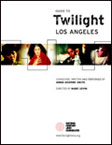As a teacher, you carefully prepare for your students, plan your lessons, develop curriculum that will meet expectations of administrators, engage students, and build critical skills for academic success. And then, there are the news items – local or global – that capture students’ hearts and minds, and change the possibilities or environment of the classroom.
Michael Brown. An unarmed black teenager shot and killed by a police officer.
How are you creating a safe and reflective classroom to help students understand this event in a thoughtful and historically-appropriate way?
Steve Becton, Associate Program Director for Urban Education at Facing History and Ourselves, shares these thoughts to help unpack the tragic death of Michael Brown and the community response, and to share tools to bring these difficult conversations into the classroom.
My first concern would be the emotional well-being of all my students and the fragility of civility right now.
If I were in a classroom teaching right now, my goals would be the following:
- Give students a safe outlet for expressing their thoughts without arguing about the incident.
- Have students imagine the best possible outcome.
- Avoid further perpetuation of the fear and hatred of law enforcement that these incidents encourage.
- Help students to consider the tools for civil protest that are in the tradition of Dr. Martin Luther King, Jr. and in the spirit of brotherhood.
- Help students to examine the role that race, class, privilege, and stereotyping plays not just in this incident, but in our society.
- Bring historical context to the conversation.
How do you do that?
The first step is contracting for civil dialogue. Then I would go into a very effective reflective writing, active listening, and civil dialogue protocol that we call "Learn to Listen/Listen to Learn.” This protocol calls for journaling, listening to others’ perspectives, and civil dialogue rather than debate. Here are some questions that I would explore depending on the age and maturity of the students:
- What are your greatest frustrations regarding the Brown incident? How does it impact you as a person?
- What role is stereotyping playing in this story (both of Brown and Officer Darren Wilson)?
- Why is Brown’s race and Wilson’s race such a huge factor here? Why does race matter so much?
- What is a responsible response to the shooting? What kind of protest might make a difference?
- How do we resist blame or hatred of all police officers? What are the consequences of blaming all of law enforcement?
- Do you agree that the best outcome of this event should lead us closer to being a more just and civil society? What does a just and civil society look like?
It is also important to define and explore the following terms. This could be started by students creating a working definition: stereotype, prejudice, justice, repair, reconciliation, civility, fairness, and community.
In what ways could historical context be brought to this conversation?
It is important with any historical events considered to avoid facile comparisons; the goal is to deepen our understanding of the historical context and the nuance of each unique case. We want to point out what feels the same and what is clearly different. Students need to understand the long history of “race” in this country and the lingering legacies of prejudicial laws, beliefs, and practices. There is compelling evidence that we have progressed in our race relations since the 1950s. There is equally compelling evidence that we have a long way to go. It is important to take the time to explore and understand “race” today in the context of this history.
 In Los Angeles, we don’t have to go far to consider historical cases of racial violence. Facing History’ study guide to Twilight: Los Angeles brings multiple lenses to the history of the Los Angeles riots of 1992. Each of the readings considers the roots of racial tension in our city, and the moments when that tension erupted in violence. After reading about this historical context, students could be asked:
In Los Angeles, we don’t have to go far to consider historical cases of racial violence. Facing History’ study guide to Twilight: Los Angeles brings multiple lenses to the history of the Los Angeles riots of 1992. Each of the readings considers the roots of racial tension in our city, and the moments when that tension erupted in violence. After reading about this historical context, students could be asked:
- What is similar and different about the historical event and incidents today?
- Despite the similarities, what real evidence do we have that the situation has changed?
- What has changed over time in the community response to violence? How do individuals now find and express voice?
- Though tragic, such incidents raise awareness and create an impetus for dialogue which could make our race relations better if handled correctly. What would make this possible?

